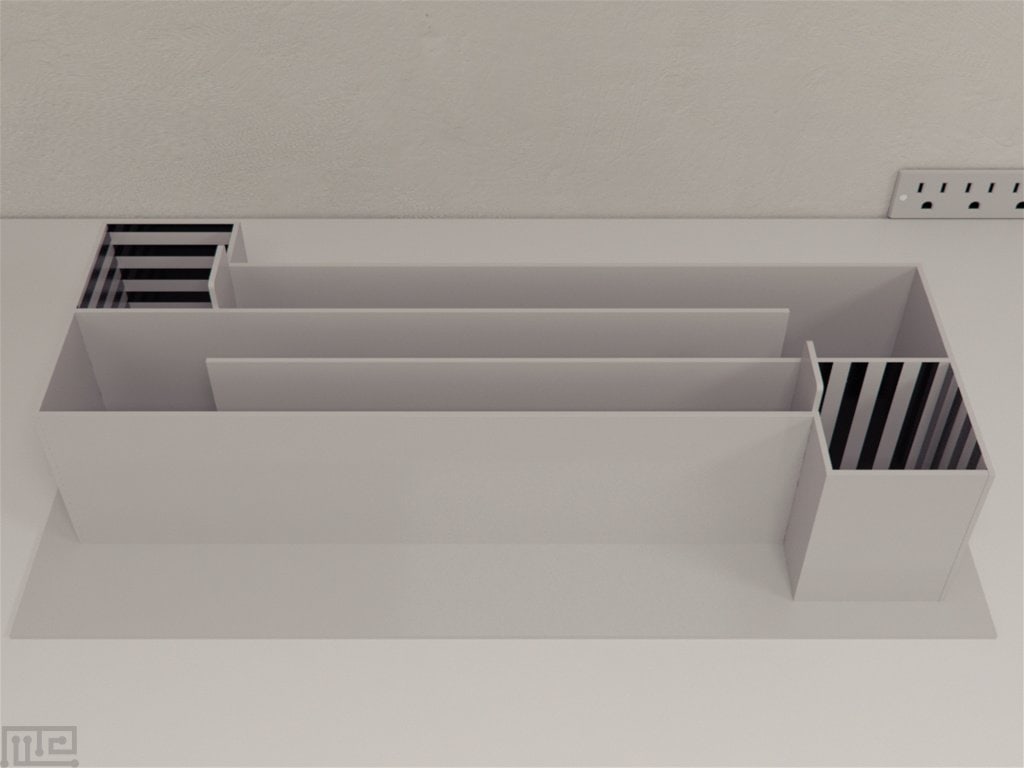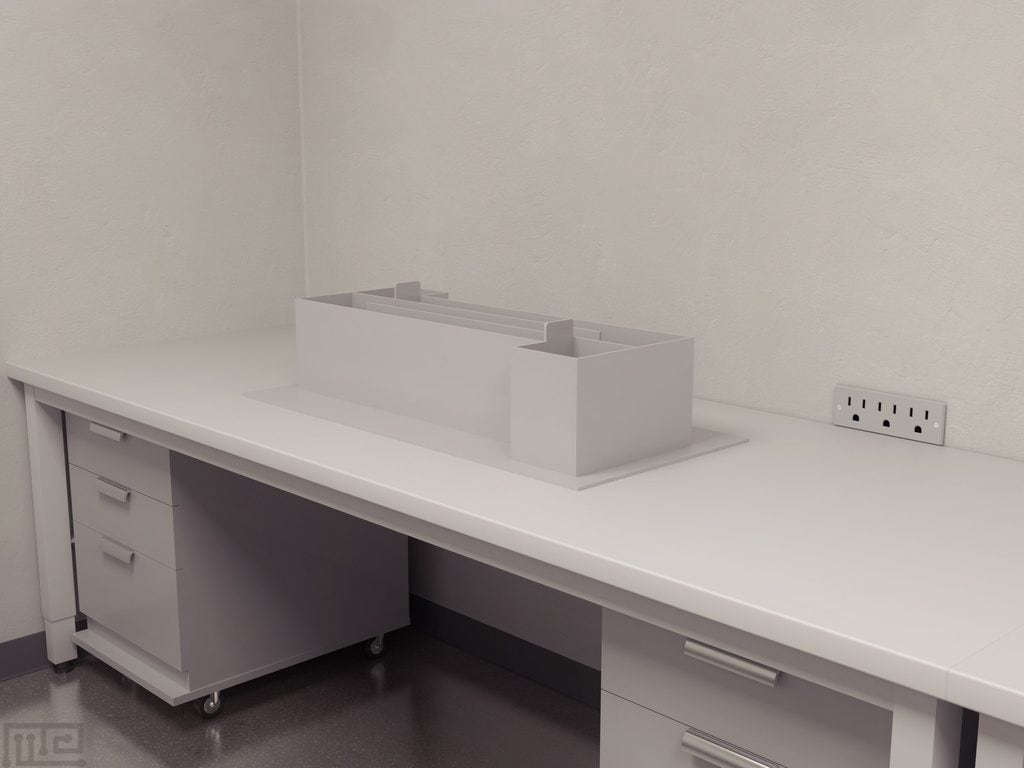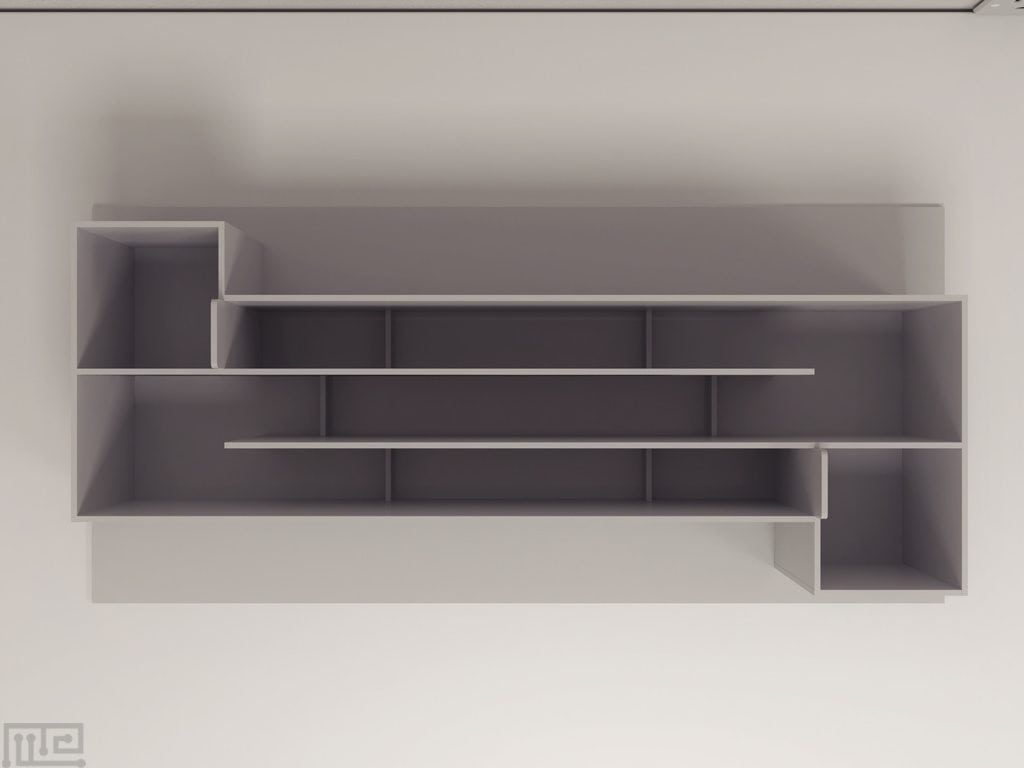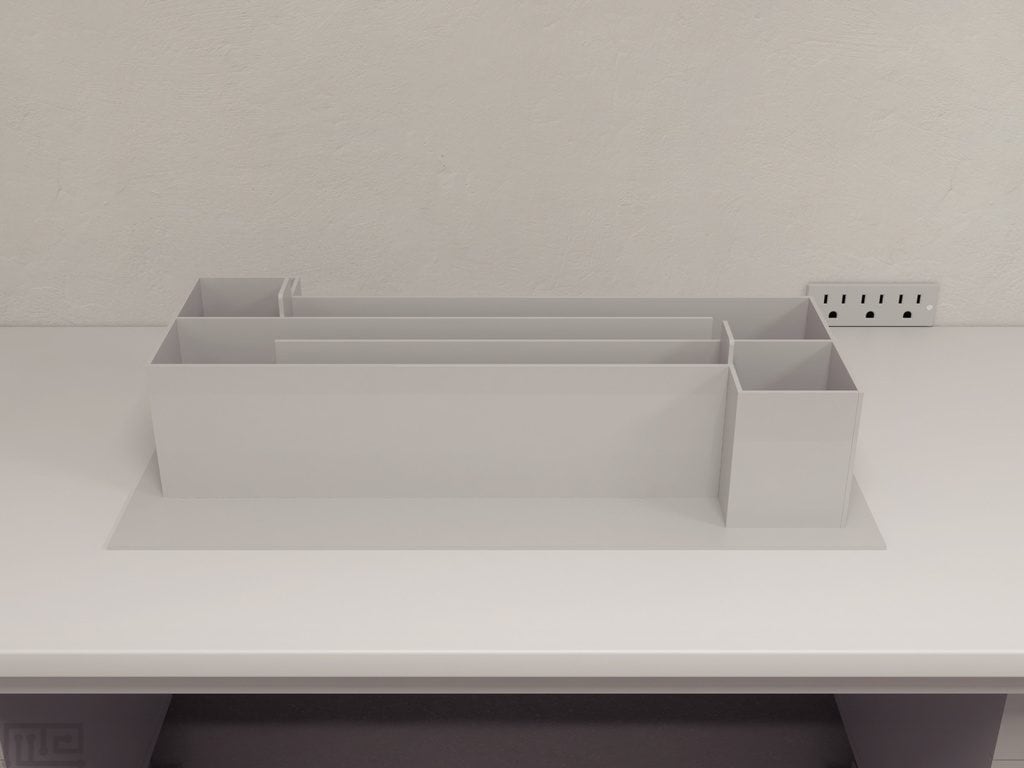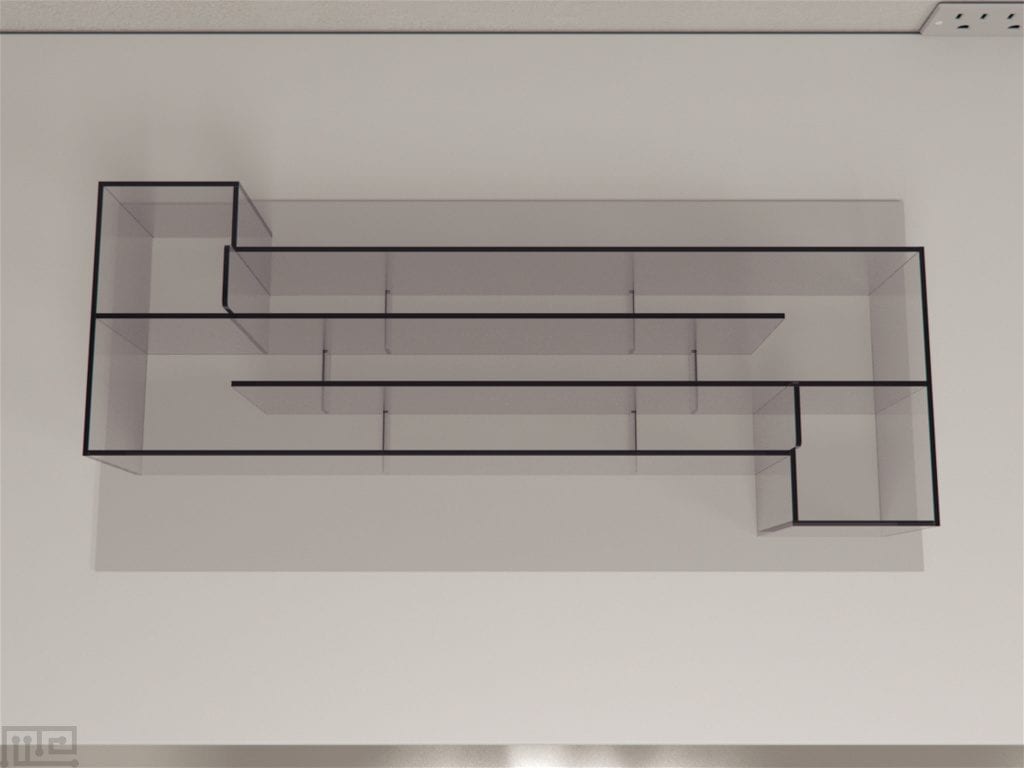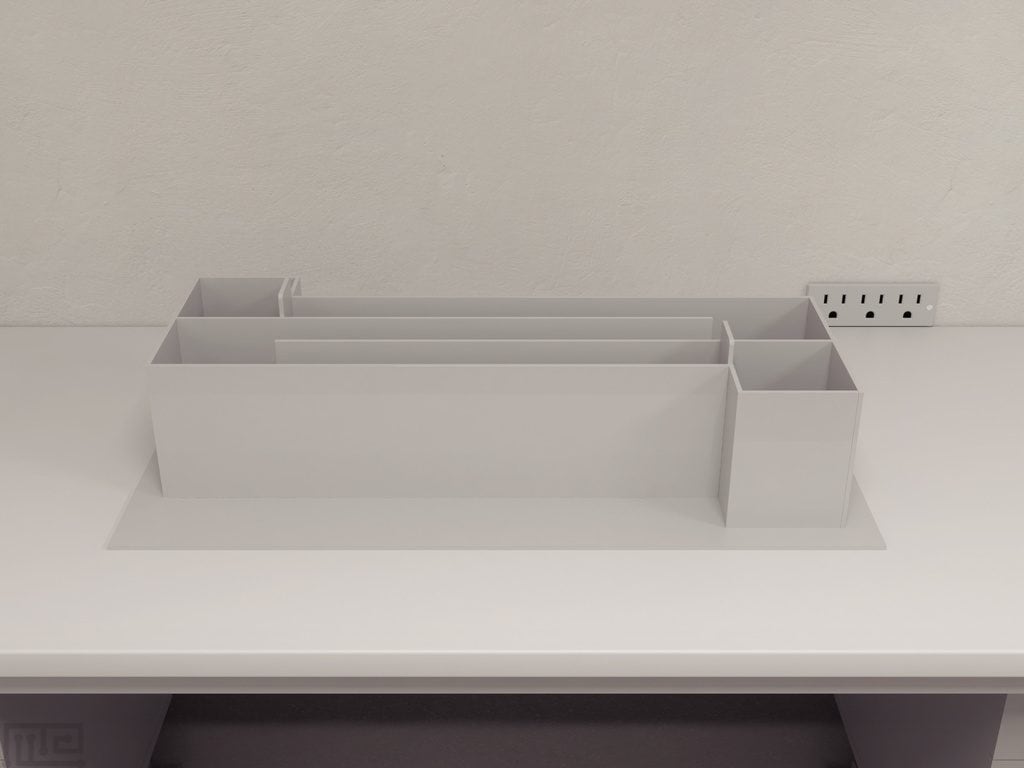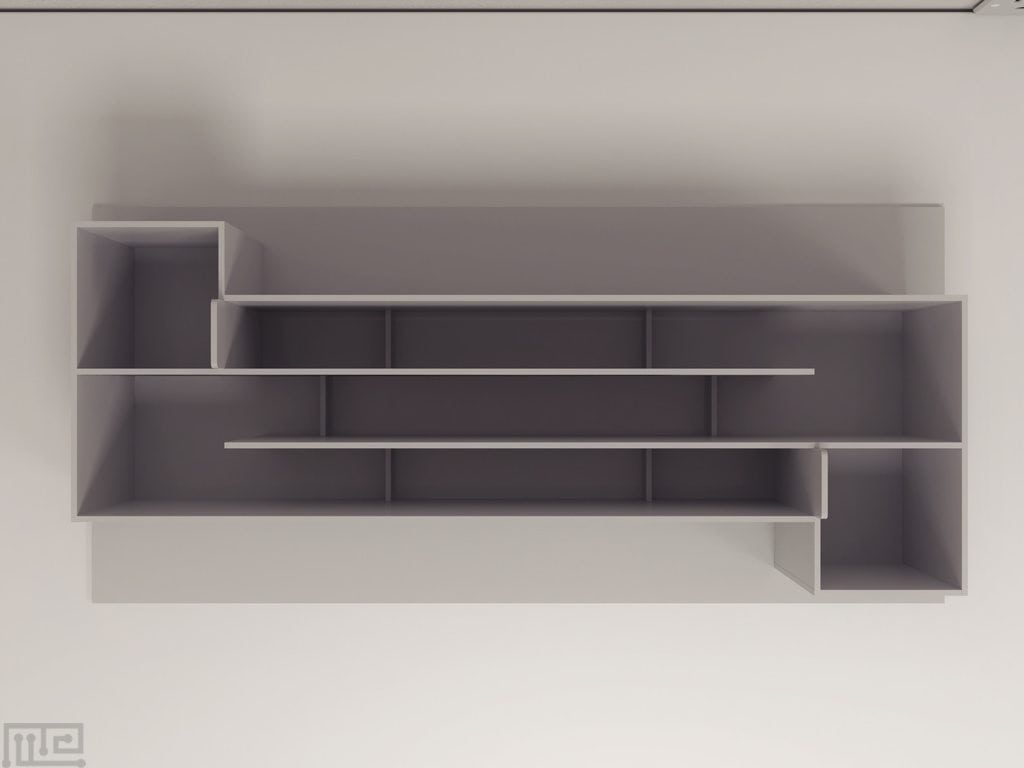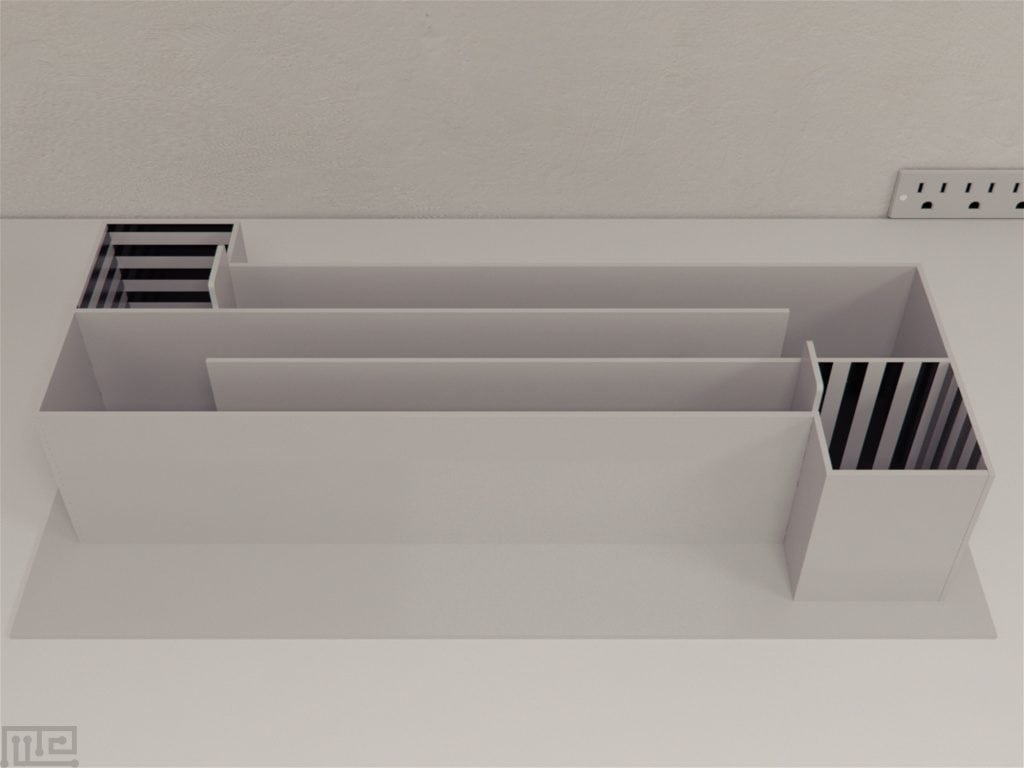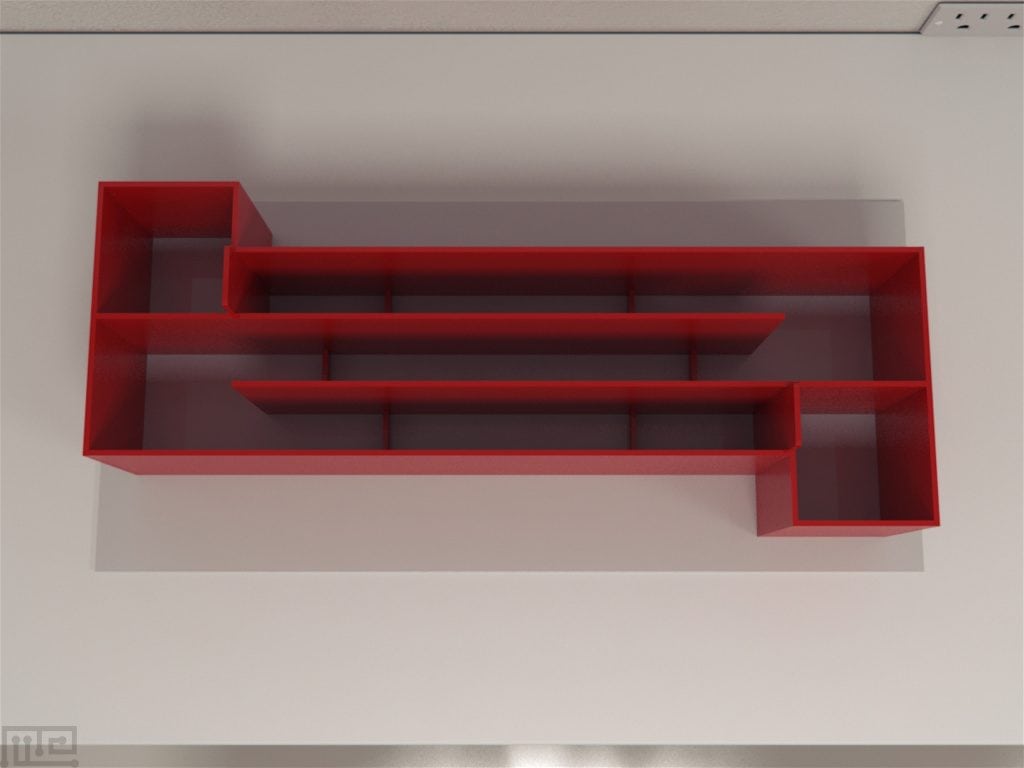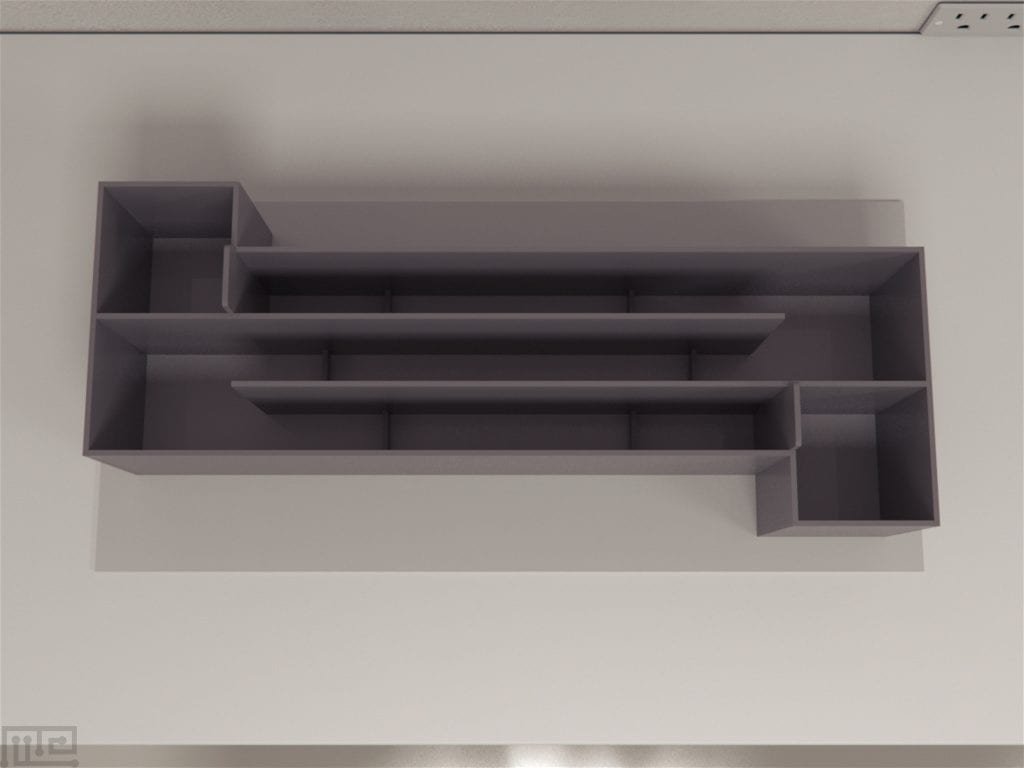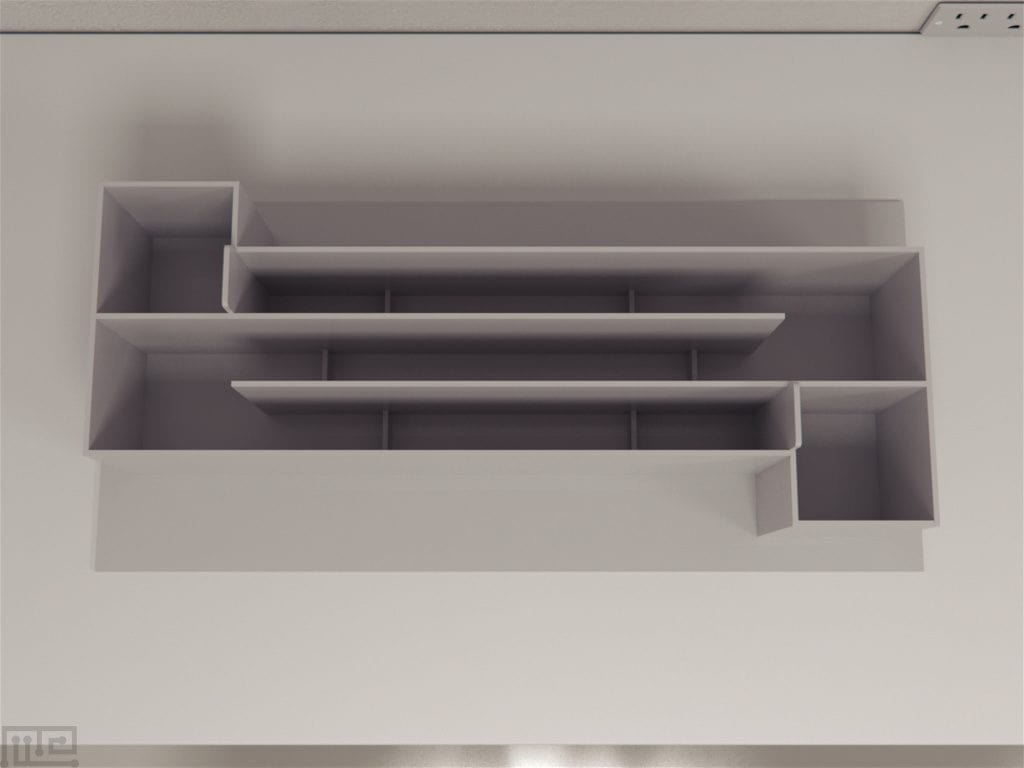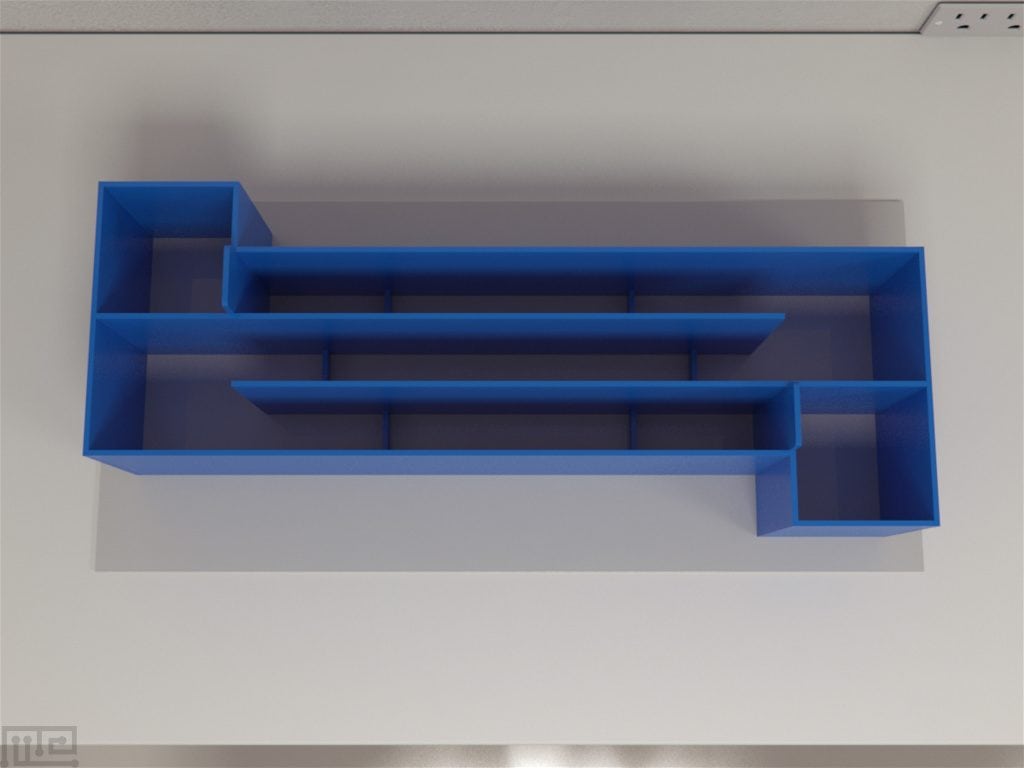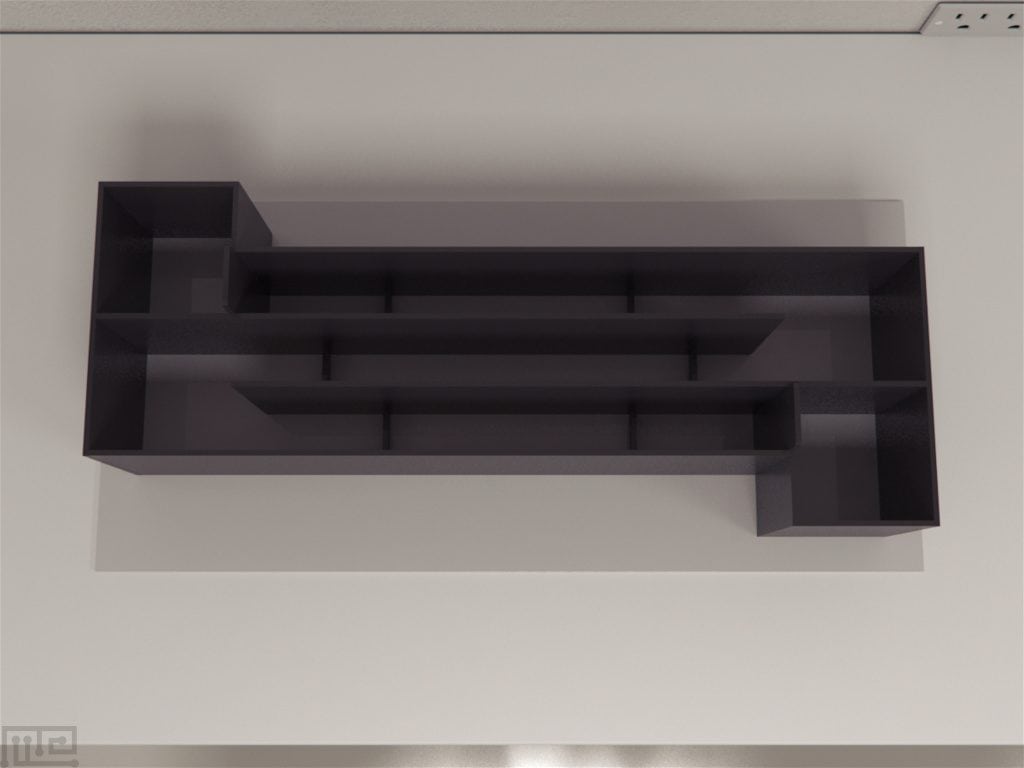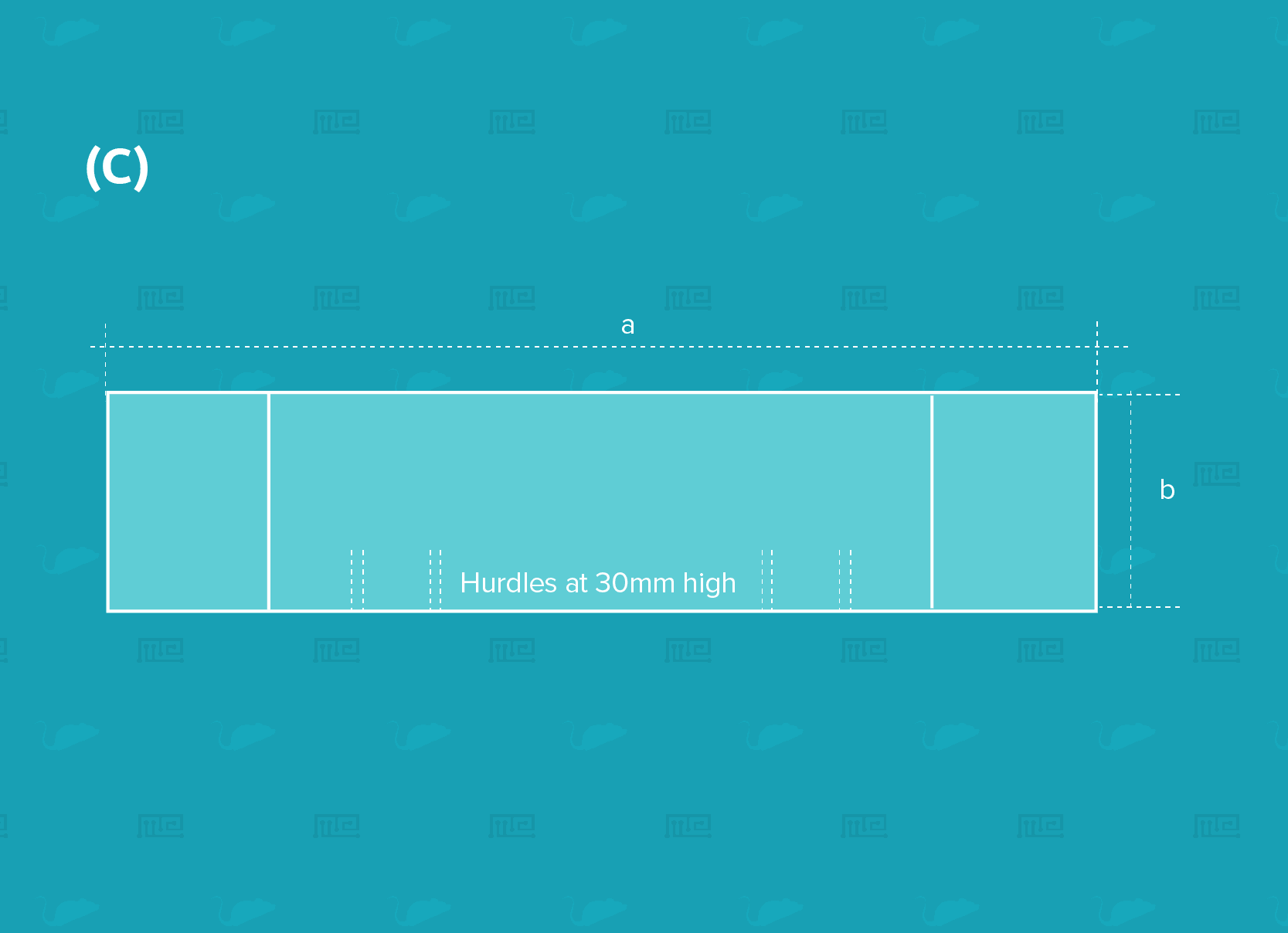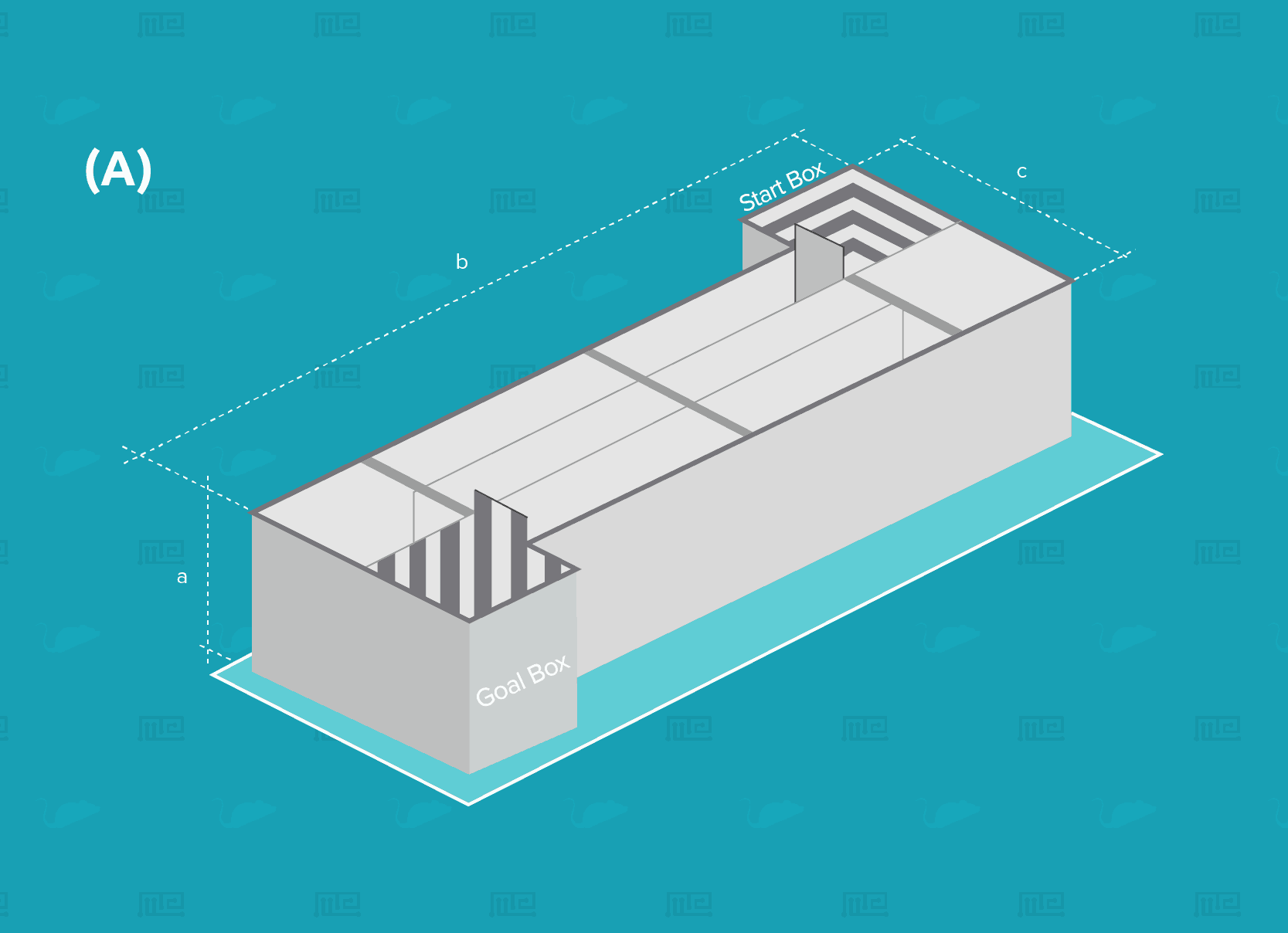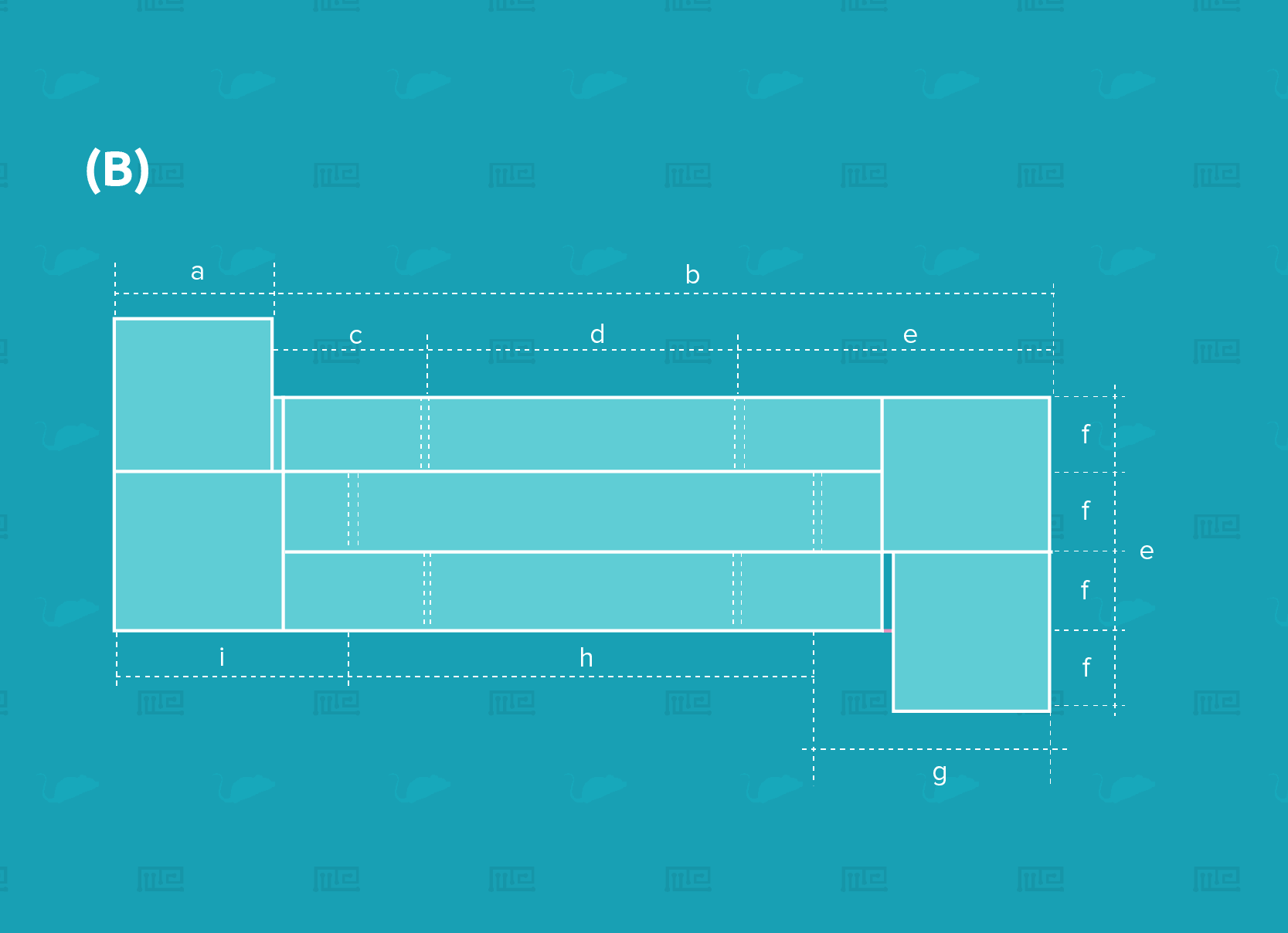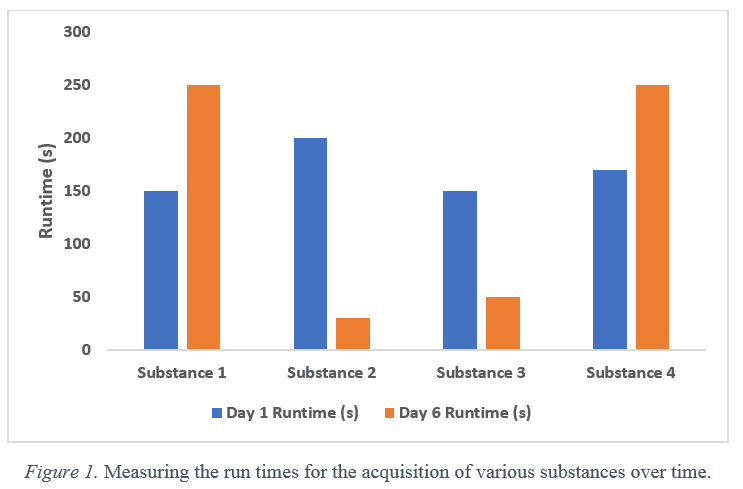Description
The rodent self administration runway is a simple yet elegant device described in the literature for drug self administration in a goal box. Drugs, alcohol and other substances can be placed at the goal box. The MazeEngineers apparatus has different sizes for both mice and rats, comes in multiple colors for a start box/end box and three runways with small barriers in the floor.
Colors available: Black/Blue/White/Grey/Red/Clear
Price & Dimensions
Mouse
$ 1990
Per MonthRat
$ 2390
Per MonthMouse
- Start box
- Length: 15 cm
- Width: 15 cm
- Height: 20 cm
- Goal Box
- Length: 15 cm
- Width: 15 cm
- Height: 20 cm
- Three straight runway segments
- Length: 60 cm
- Width: 75 cm
- Height: 20cm
- 2 hurdles, 3cm height, in each segment of the runway to decrease the speed to reach the goal box.
- Start Box: Black walls with white horizontal stripes and a black polished floor surface. Guillotine door.
- Goal box: White walls with black vertical stripes, white wire-mesh floor. Guillotine door.
- Total runway distance from the start box to goal box: 180cm
Rat
- Start box
- Length: 20 cm
- Width: 20 cm
- Height: 26 cm
- Goal Box
- Length: 20 cm
- Width: 20 cm
- Height: 26 cm
- Three straight runway segments
- Length: 80 cm
- Width: 100 cm
- Height: 26 cm
- 2 hurdles, 4cm height, in each segment of the runway to decrease the speed to reach the goal box.
- Start Box: Black walls with white horizontal stripes and a black polished floor surface. Guillotine door.
- Goal box: White walls with black vertical stripes, white wire-mesh floor. Guillotine door.
- Total runway distance from the start box to goal box: 240cm
Documentation
Introduction
The self-administration runway is a valuable apparatus that can be used to study the motivation and substance-seeking behavior in rodents. More specific studies, such as those that aim to observe and explain the effects and implications of self-administration of drugs, alcohol, and other substances to laboratory rodents could also be conducted with this self-administration runway setup (Pandy and Khan, 2016).
Made of acrylic, this runway setup has a long alley composed of three segments, with the start box on one end and goal box on the other end of the alley. The whole stretch of the alley is built with small hurdles that would necessitate the subjects to jump from one hurdle to the next. Two sizes are available, one for mice and another for rats, to suit your laboratory and research needs.
Apparatus and Equipment
The self-administration runway is made of acrylic and is composed of three main parts: the start box, the goal box, and the runway.
The start box is a quadrangular space with black walls and white horizontal stripes, black polished floor surface, and guillotine door. The start box measures 15 cm x 15 cm x 20 cm for the mouse setup and 20 cm x 20 cm x 26 cm for the rat setup.
The goal box is likewise quadrangular, with white walls and black vertical stripes, wire-mesh floor, and guillotine door. The dimensions of the goal box are identical with those of the start box.
The runway is made up of three straight segments, with two hurdles (4 cm in height) in each segment of the runway to decrease the speed of the subject to the goal box. The dimensions of the runway segments are 60 cm x 75 cm x 20 cm for the mouse setup and 80 cm x 100 cm x 26 cm for the rat setup. The total runway distance from the start box to the goal box is 180 cm for the mouse setup and 240 cm for the rat setup.
Training Protocol
The training protocol is composed of six phases: habituation, pre-conditioning, conditioning, post-conditioning, extinction, and reinstatement.
Habituation
The habituation phase is done in one day wherein each subject is individually placed in the start box for 90 seconds. Then, the guillotine door is lifted to allow the subject to freely roam the straight alley part of the runway for 10 minutes.
Pre-conditioning
During the pre-conditioning, each subject is allowed to run from the start box to the goal box via the straight runway. As soon as the subject enters the goal box, the guillotine door of the goal box closes to prevent retracing. The time interval between the opening of the start box and the closing of the goal box is recorded. The baseline reading for the pre-conditioning phase is the initial run time. The subjects are returned to the home cages after recording the run times.
Conditioning
For conditioning, each subject is allowed to run from the start box to the goal box via the runway. The run times are recorded for each trial. As soon as the animal enters the goal box, the substance under consideration (e.g., drug, saline, alcohol, etc.) could now be administered via single injection with increasing dosage for five days. The subjects are to be confined in the goal box before returning them to their home cage. Record the doses administered to the subjects from Day 1 to Day 5.
Post-conditioning
For post-conditioning, the subjects are placed in the start box for 90 seconds after which the guillotine door is lifted. The subjects are then allowed to run freely to the goal box. No substance is administered in this post-conditioning phase (Day 6).
Extinction Test
The 5-day extinction period (Day 7 to 11) follows 24 hours after the post-conditioning phase. No substance administration should be done during this extinction period. The run times are recorded each day. On Day 12, no treatment or testing should be conducted.
Reinstatement
For the reinstatement phase (Day 13), each subject shall receive a priming dose of a pre-tested substance appropriate for the study. Fifteen minutes after the administration of the priming dose, subjects are placed individually in the start box for a single runway trial as that described for post-conditioning.
Evaluating the motivational effects of a single drug
This modified self-administration runway could be used as a powerful tool for the study of the behavioral and neurobiological aspects of self-administration of drugs. For instance, the runway model could be used to assess the motivation of laboratory mice to seek nicotine, similar to the study by Cohen and Ettenberg (2007). The neurological effects of specific drugs could also be identified using this runway model, as seen in the study conducted by Ettenberg and Geist (1991) on the anxiogenic effects of cocaine.
Determining the extent of motivation
For simpler studies, the modified self-administration runway is still reliable, as it can be used to assess the motivation of subjects to seek positive incentive stimuli, such as food or water. The speed of the trained mouse as it traverses the runway provides a reliable index of its motivation for the positive stimuli (Ettenberg 2009).
Strengths & Limitations
This self-administration runway is constructed with a long alley composed of three runways adjoined in a zigzag manner with the goal of increasing the runtime of the subjects to reach the goal box. Small hurdles are incorporated into the runway, thus requiring the subjects to jump over, thereby further increasing the runtime. Increasing the runtime is a crucial modification to eliminate the floor effects usually generated from the short course in straight alleys. Moreover, the zigzag design and incorporated hurdles could help the researcher in differentiating drug-induced increase or decline in the subjects’ operant behavior, which would be more difficult to assess in runways with a straight alley design.
Summary and Key Points
- This self-administration runway is a simple apparatus that could be used to assess motivational behavior in mice and rats.
- Studies on the effects of drugs on the behavior of subjects could be easily and effectively conducted with this self-administration runway apparatus.
- The long alley and hurdles make this runway design an optimal setup for evaluating the drug-induced increase or decline in the operant behavior of subjects.
References
Cohen, A. & Ettenberg, A. (2007). Motivational effects of nicotine as measured in a runway model of drug self-administration. Behav Pharmacol.18(4):265-71. doi: 10.1097/FBP.0b013e3281f19b3c.
Ettenberg, A. (2009). The runway model of drug self-administration. Pharmacol Biochem Behav. 91(3):271-7. doi: 10.1016/j.pbb.2008.11.003.
Ettenberg, A. & Geist, T. (1991). Animal model for investigating the anxiogenic effects of self-administered cocaine. Psychopharmacology 103(4):455-61. PMID: 2062985.
Pandy, P. & Khan, Y. (2016). Design and development of a modified runway model of mouse drug self-administration. Sci. Rep, 6:21944. doi: 10.1038/srep21944.

